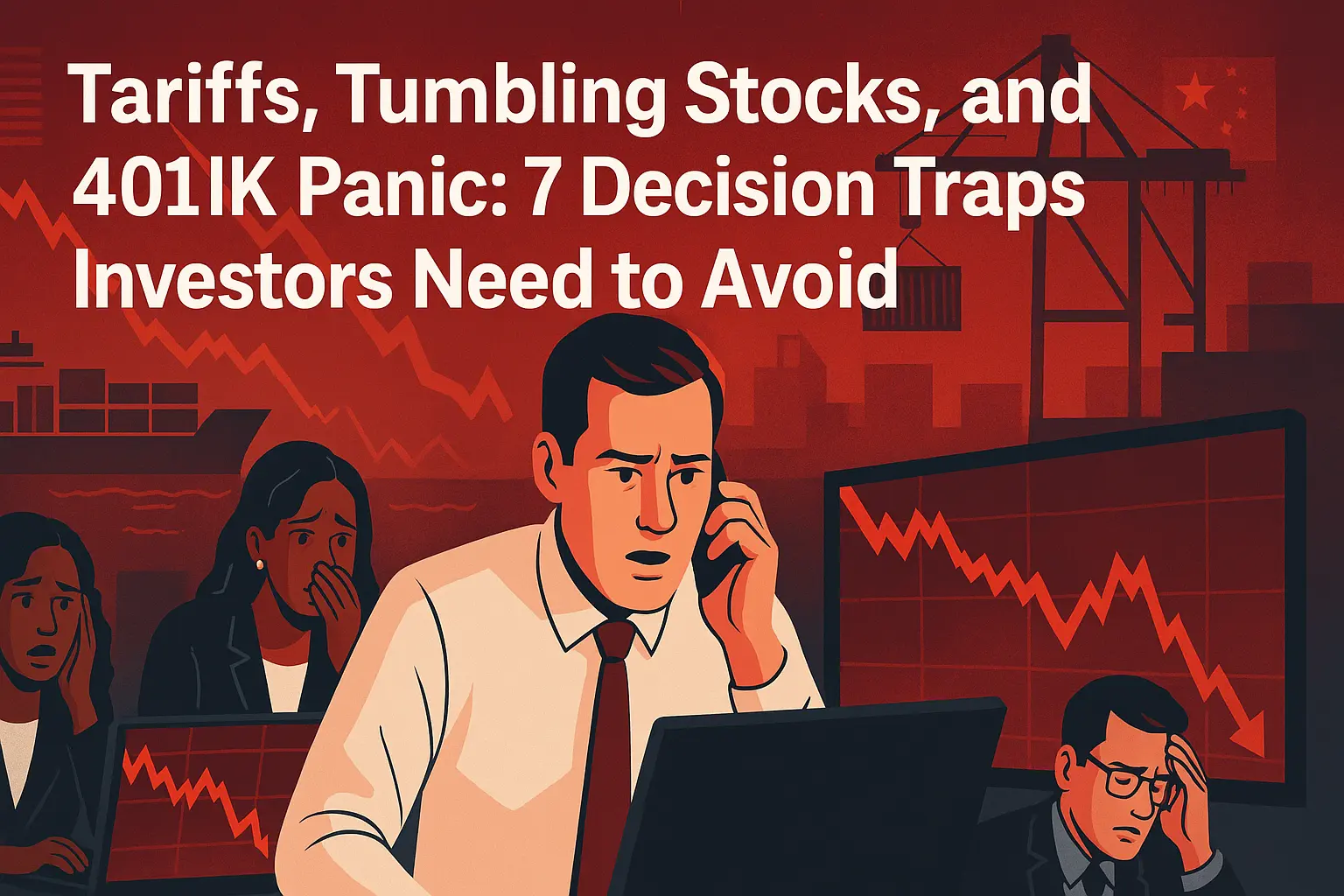
Tariffs, Tumbling Stocks, and 401K Panic: 7 Decision Traps Investors Need to Avoid
Common mental shortcuts that can sabotage your financial decisions—and practical ways to avoid them
The stock market is in the ditch. Tariff fears are dominating headlines, and your 401K balance seems to be shrinking by the day. If you’re feeling uneasy, you’re in better shape than me because I’m downright sick.
However, the biggest threat to your investments isn’t just market instability—it’s the mental shortcuts your brain naturally takes under pressure. Known as “decision traps,” these shortcuts affect everyone, not just inexperienced investors. They’re scientifically proven patterns in how we handle complex and uncertain situations. Skeptical? This short video explains how these cognitive biases affect us all.
Let’s explore seven common decision traps investors often fall into during market turmoil and how you can practically avoid them.
1. Action Bias: Don’t Just Do Something…Stand There
When markets drop sharply, panic often sets in. We feel compelled to act—sell stocks, convert to cash, or drastically alter our investment strategies. Ironically, frequent trading during turbulent times typically leads to poorer outcomes.
Practical Tip: Before acting, wait at least 24 hours. Use this “cool-off” period to consult historical market recoveries or speak with a trusted financial advisor.
2. Risk Aversion Trap: Selling Winners Early, Doubling Down on Losers
Risk aversion can distort your decision-making. When you’re ahead, you might sell quickly to “lock in” gains, potentially missing out on further profits. Conversely, if you’re down, desperation can push you to take even bigger risks, such as pouring money into falling investments, hoping for a quick recovery.
Practical Tip: Set predetermined rules for buying and selling. Clearly outline conditions that trigger selling or additional investment, based strictly on financial analysis—not emotions. Better yet, automate it by using limit and stop orders to take the emotion out of the decision.
3. Availability Bias: Why Frightening Headlines Heighten Your Fears
When alarming headlines dominate news cycles, they make risks feel far more likely than they actually are. Dramatic stories about market crashes stick with us, even if they’re rare or temporary events.
Practical Tip: Focus on historical data. Review how often major downturns occur and how markets historically recover. Limit your exposure to sensationalist news sources.
4. Sunk Cost Trap: Why You Can’t Let Go of Losing Investments
Admitting losses is tough. Many investors keep sinking resources into underperforming investments simply because they’ve already invested so much, hoping to eventually break even.
Practical Tip: Regularly ask yourself, “Would I buy this stock today at its current price?” If the answer is “no,” it may be time to move on, regardless of past investment.
5. Framing Trap: How News Headlines Manipulate Your Decisions
The way economic news is presented—like calling tariffs a “trade war” versus “negotiation”—significantly influences your emotional response and subsequent investment choices.
Practical Tip: Intentionally seek multiple perspectives on market news. Regularly consult balanced, neutral financial analyses to counteract dramatic framing effects.
6. Hindsight Bias: Why You Didn’t Really “See It Coming”
After market declines, it’s tempting to think you predicted them all along. Hindsight bias makes it difficult to objectively evaluate your decisions and learn from genuine missteps.
Practical Tip: Keep a journal or document your investment decisions, clearly noting your rationale and expectations. Reviewing these notes later will clarify what was truly predictable versus hindsight.
7. Status Quo and Action Bias Collision: Should You Rebalance During a Crisis?
Market crises often leave investors either frozen (status quo bias) or excessively reactive (action bias). Both extremes can damage your portfolio.
Practical Tip: Schedule periodic portfolio reviews—quarterly or annually—and stick to them, crisis or not. Rebalancing should be proactive and systematic, not reactive and emotional.
Conclusion: Outsmarting Your Own Mind
The biggest hurdles in decision-making aren’t external—they’re in your own mind. Decision traps affect everyone, turning smart, rational individuals into their own worst enemies, especially when stress is high and stakes are higher. Recognizing and intentionally avoiding these traps isn’t just helpful; it’s critical. Whether you’re navigating financial markets or daily life, learning to sidestep these cognitive pitfalls will lead to clearer thinking, better decisions, and greater confidence.
Ready to sharpen your decision-making skills? Download our free guide, The Hidden Traps Sabotaging Your Decisions, or explore our engaging video series to start making better decisions today.
Chris Seifert is the author of Enabling Empowerment: A Leadership Playbook for Ending Micromanagement and Empowering Decision-Makers. With over two decades of experience in transforming organizations through strategic leadership and decision-making frameworks, Chris has helped teams cut through bottlenecks, optimize capital project budgets, and build cultures of accountability. He is passionate about teaching leaders how to empower their teams to make smarter, faster decisions without sacrificing business value.

